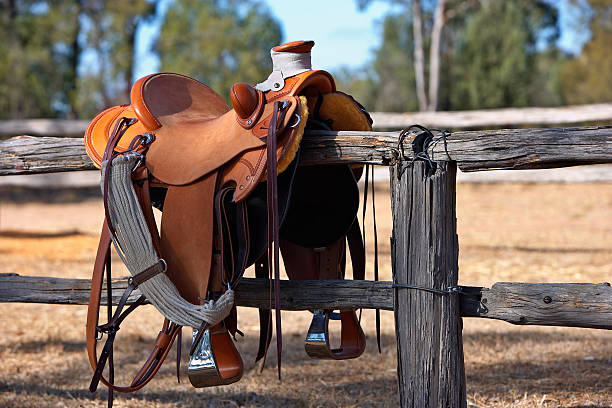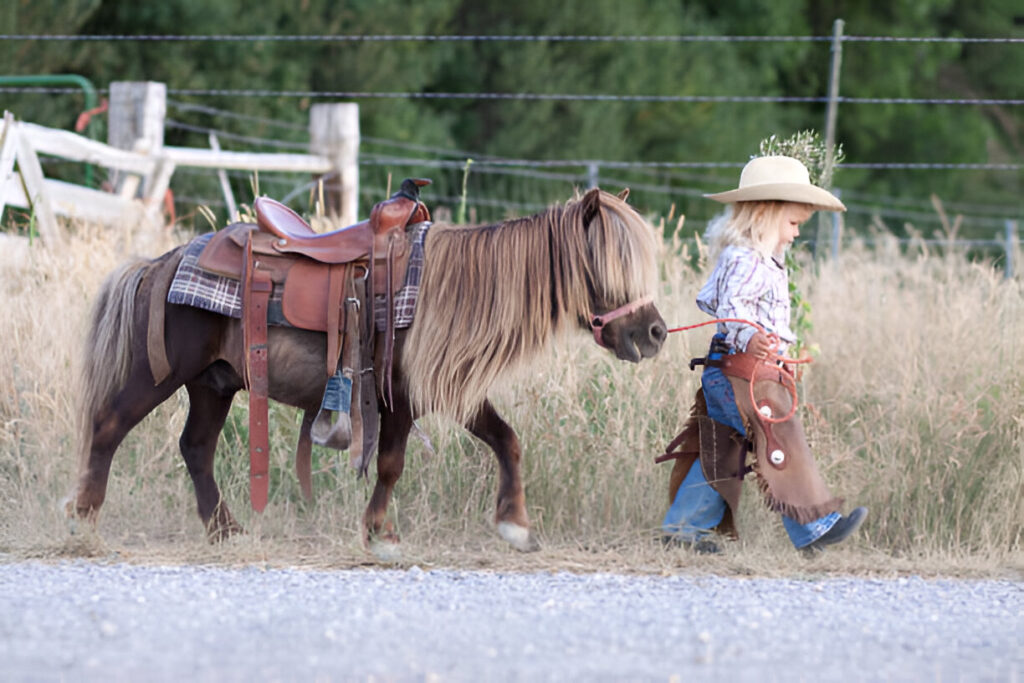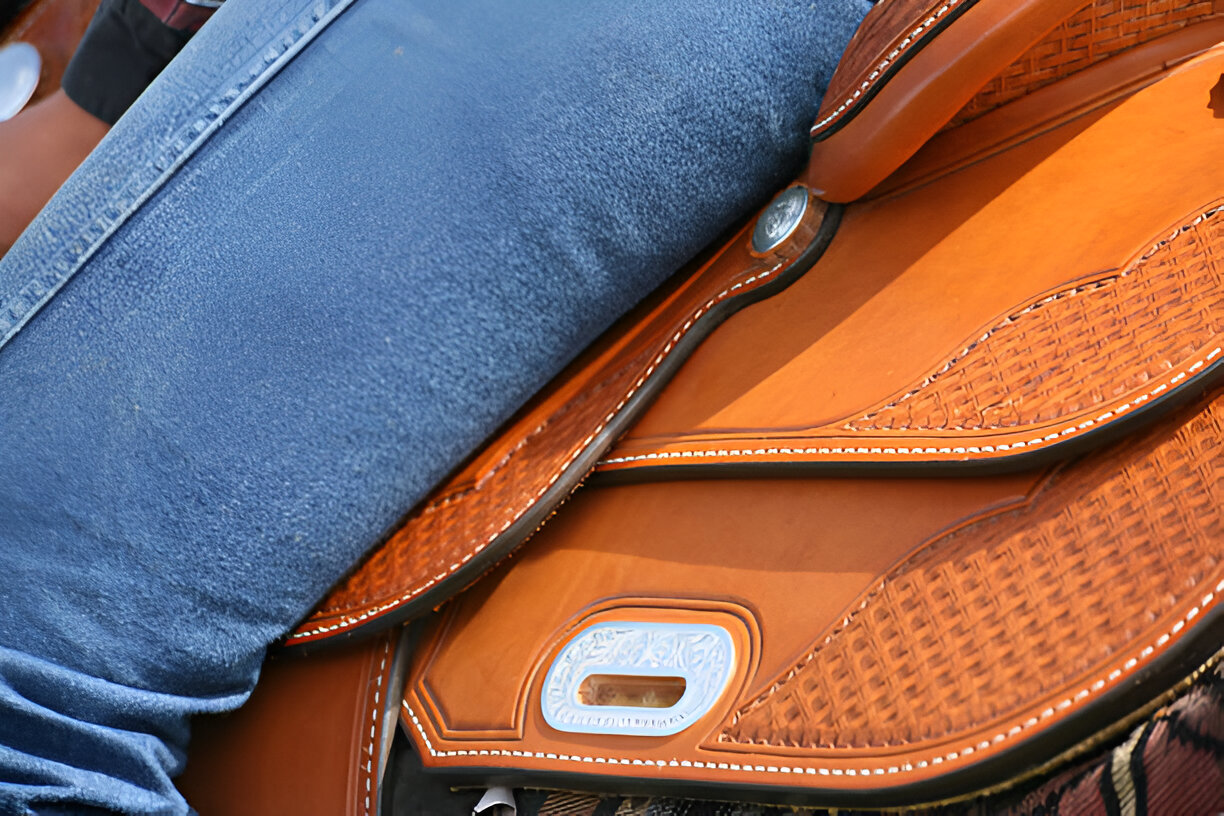
The Sheridan Saddle: A Timeless Icon of Western Craftsmanship
Discover the rich heritage, exquisite craftsmanship, and enduring legacy of the Sheridan saddle
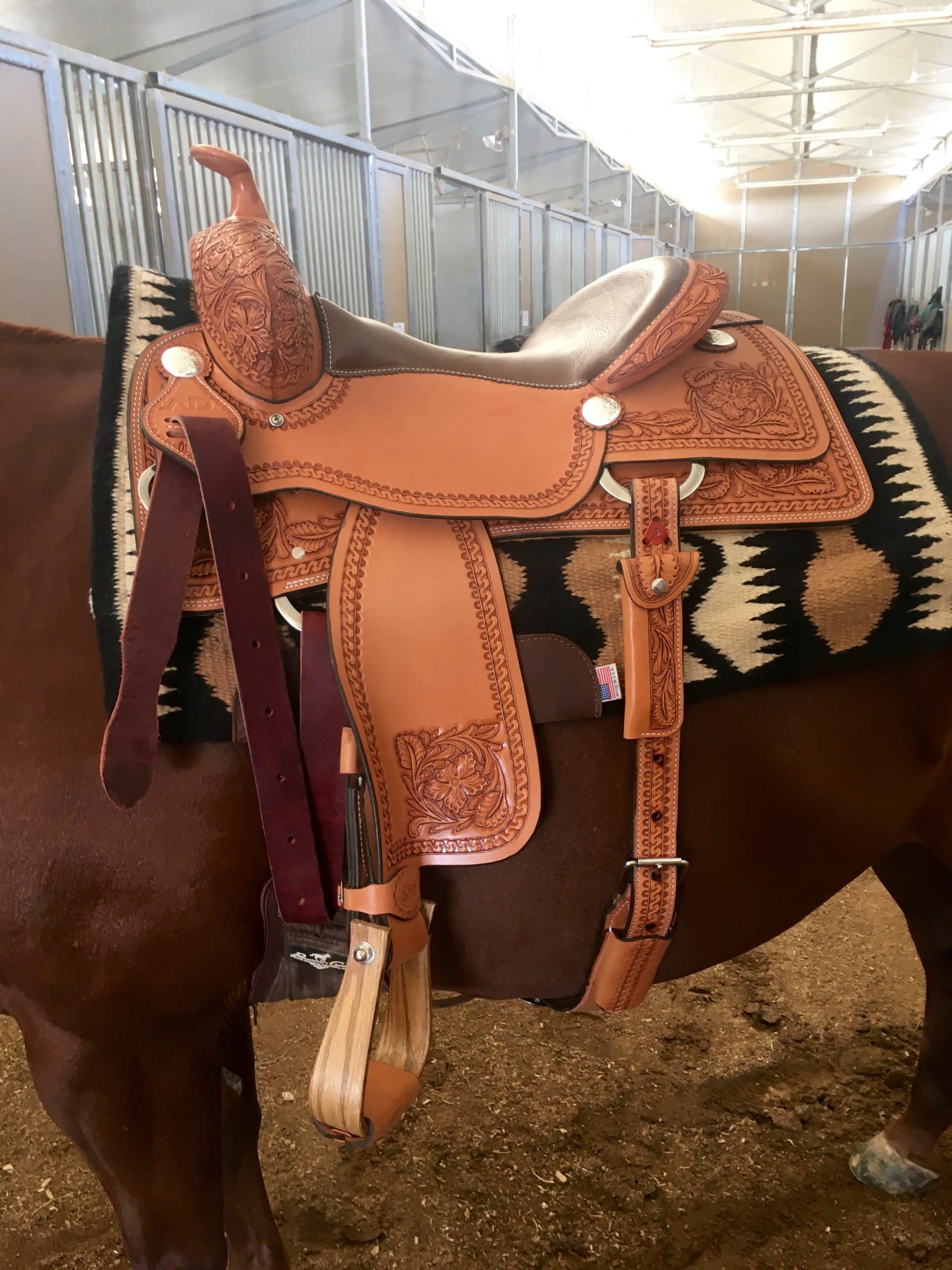
A beautifully crafted Sheridan saddle showcasing the distinctive floral carving pattern and superior craftsmanship
When it comes to Western saddles that perfectly blend functionality with artistry, few can rival the distinctive beauty and craftsmanship of the Sheridan saddle. Having spent over 20 years working with these magnificent pieces, I can attest that they represent more than just horseback riding equipment—they embody a rich cultural heritage, exceptional artisanship, and a profound connection to America’s Western traditions. In this comprehensive guide, I’ll share insights gained from my apprenticeship with a third-generation Sheridan-style saddle maker and my experience restoring vintage Don King saddles.
The Rich History of Sheridan Saddles
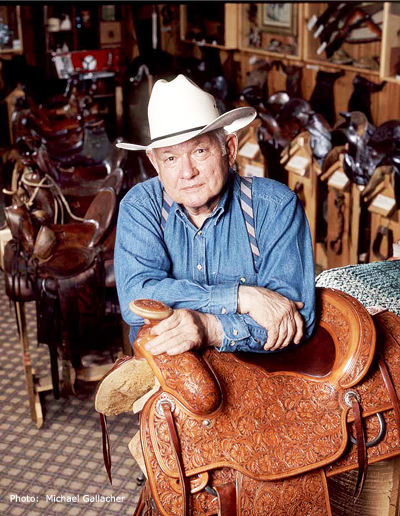
Don King, the legendary saddle maker who popularized the Sheridan style
The story of Sheridan saddles is deeply intertwined with the history of Sheridan, Wyoming itself. Founded in 1878, Sheridan quickly became a hub for the cattle industry, horse culture, and dude ranches in the late 19th century. During my research at the Wyoming State Archives, I discovered correspondence between early ranchers that revealed how the demand for quality saddles tailored to the needs of working cowboys drove innovation in local leather workshops.
The Birth of a Distinctive Style
While leather crafting and saddle making had been practiced in the region for decades, what we now recognize as the “Sheridan style” didn’t fully emerge until the mid-20th century. The true catalyst for the Sheridan saddle’s rise to prominence was largely the work of one remarkable craftsman: Don King.
Don King, who opened King’s Saddlery in Sheridan in 1961, is widely credited with developing and popularizing what became known as the Sheridan style. A National Heritage Fellow recognized by the National Endowment for the Arts, King masterfully combined elements from various saddle-making traditions to create something truly distinctive. In 2003, I had the privilege of interviewing King’s longtime assistant, who shared fascinating details about how King experimented with deeper beveling techniques and specialized stamping tools to achieve the signature depth that characterizes Sheridan-style carving.
Evolution and Influence
King didn’t create the Sheridan style in isolation. He was influenced by several saddle-making traditions, including:
- California Style: Often associated with Visalia Saddlery, this Spanish-influenced style features elaborate and ornate carving. During my restoration work on a 1930s Visalia saddle, I observed firsthand how King incorporated the flowing scrollwork but made it bolder and more three-dimensional.
- Arizona Style: King learned elements of this style from craftsman Joe Showater. The characteristic “full flower” technique is something I’ve practiced extensively in my own leather workshops.
- Texas Style: Known for its functionality and durability for working cowboys. The structural elements of Texas-style saddles remain evident in many Sheridan designs I’ve examined.
What made King’s approach revolutionary was his ability to synthesize these different traditions into a cohesive, recognizable style that became synonymous with Sheridan, Wyoming. Under his guidance, King’s Saddlery became not just a business but an institution that trained generations of leather workers and saddle makers, ensuring the survival and evolution of the Sheridan tradition.
Today, King’s Saddlery, still family-owned and operated in Sheridan, stands as a testament to this enduring legacy, continuing to support and celebrate authentic cowboy culture since 1961. During my annual visits to their workshop, I’m always struck by how faithfully they maintain traditional techniques while subtly evolving to meet contemporary riders’ needs.
Distinctive Features of Sheridan Saddles

Close-up of the intricate floral carving pattern characteristic of Sheridan style
What exactly sets a Sheridan saddle apart from other Western saddles? Having examined and worked with hundreds of saddles across different styles, I can pinpoint the distinctive characteristics that make Sheridan saddles immediately recognizable and highly prized among enthusiasts and professional riders alike.
The Iconic Sheridan Style Leather Carving
The most immediately recognizable feature of a Sheridan saddle is undoubtedly its distinctive leather carving style. This is far more than mere decoration—it represents a unique art form that has become synonymous with Sheridan, Wyoming’s identity as a center for exceptional leather craftsmanship.
Key Elements of Sheridan Carving
- ✓Floral Patterns: Typically featuring intricate, balanced floral designs with roses, scrollwork, and acanthus leaves. Having carved hundreds of these patterns myself, I can tell you that achieving the perfect symmetry and flow takes years of practice.
- ✓Deep Relief: The carving is characterized by deep, three-dimensional relief that creates a striking visual contrast between the background and the raised design elements. When teaching workshops, I demonstrate how proper beveling technique is crucial for achieving this depth without weakening the leather.
- ✓Fine Background Texturing: The background is often filled with small, precisely executed stamping patterns (sometimes called “matting”) that make the main design elements stand out dramatically. I typically use a combination of basket weave, checkered, and stippling tools to create these backgrounds.
- ✓Symbolic Elements: Many Sheridan saddles incorporate symbolic elements relevant to Western life, such as acorns (representing strength and potential) and various flower motifs. In my collection of vintage patterns, I’ve documented over 30 distinct symbolic elements used in traditional Sheridan designs.
- ✓Border Work: Precise, clean border designs that frame the main decorative areas. The most skilled craftspeople can execute these borders with such consistency that they appear machine-made, though they’re done entirely by hand.
Structural Excellence
Beyond their artistic elements, Sheridan saddles are renowned for their structural quality and functional design. These saddles aren’t just beautiful—they’re built to perform in demanding riding conditions. Having ridden in Sheridan saddles for more than 15 years on working ranches in Wyoming and Montana, I can attest to their exceptional durability and comfort during long days in the saddle.
| Feature | Description | Benefit |
|---|---|---|
| Tree Construction | Typically built on high-quality, durable trees with quarter horse bars | Provides excellent fit for a wide range of horse types |
| Gullet Width | Often features a 7-inch gullet standard | Suitable for horses of various ages and conformations |
| Leather Quality | Premium, heavy-duty skirting leather | Ensures longevity and ability to withstand daily use |
| Seat Design | Often features a “Softee” seat jockey and fender leather | Provides a “ready to ride” feel without lengthy breaking-in period |
| Horn Design | Varies based on intended use (roping, cutting, etc.) | Customized functionality for specific riding disciplines |
| Skirt Shape | Often follows traditional Western patterns with ample surface area | Provides good weight distribution across the horse’s back |
| Rigging Options | Available in various positions (full, 7/8, 3/4, center-fire) | Allows customization based on riding style and needs |
Versatility Across Riding Disciplines
One of the remarkable aspects of Sheridan saddles is their versatility across different Western riding disciplines. While maintaining their distinctive artistic style, these saddles are crafted in various specialized forms to meet the needs of different riders. In my career training cutting horses, I’ve found that a well-made Sheridan cutting saddle offers the perfect balance of security and freedom of movement needed for this demanding discipline.
- Ranch Saddles: Built for durability and all-day comfort during ranch work. I rode in a Sheridan ranch saddle for 12-hour days during calving season and never experienced the soreness common with lesser saddles.
- Barrel Racing Saddles: Designed with performance features for speed and agility. The forward-hung stirrups and secure seat provide the perfect balance of stability and freedom of movement.
- Roping Saddles: Reinforced to withstand the rigors of roping events. The double-rigged construction and sturdy horn can withstand the tremendous force when stopping a running steer.
- Cutting Saddles: Created with features that support quick, athletic movements. In my experience, the deep seat and free-swinging fenders allow you to stay centered during even the most dramatic cow turns.
- Trail Saddles: Optimized for long-distance comfort for both horse and rider. I’ve completed several 25-mile mountain trails in my Sheridan trail saddle without any discomfort.
- Show Saddles: Often featuring the most elaborate decoration for competition. The intricate carving catches the judge’s eye while providing the functionality needed for competitive performance.

Modern Sheridan All-Around saddle showcasing traditional styling with contemporary functionality
The Craftsmanship Behind Sheridan Saddles
Creating a genuine Sheridan saddle is a painstaking process that requires exceptional skill, patience, and artistic vision. Having apprenticed for three years under a master saddlemaker and spent countless hours perfecting my own technique, I can attest that understanding this process helps appreciate why these saddles command respect and premium prices in the equestrian world.
The Saddle-Making Process
The creation of a Sheridan saddle involves numerous steps, each requiring specialized knowledge and skills. During my apprenticeship, I spent six months just learning to properly prepare leather before I was allowed to cut a single pattern piece:
- Tree Selection and Preparation: The process begins with selecting the appropriate saddle tree—the internal frame that gives the saddle its shape and structure. For Sheridan saddles, this typically involves high-quality, hand-crafted wooden trees reinforced with rawhide or modern composite materials. I personally prefer wade trees from Ralide for their durability and consistent quality.
- Pattern Making: The saddle maker creates or selects patterns for all leather components, including the skirts, fenders, seat, and decorative elements. I’ve developed my own modified patterns based on traditional designs that provide better weight distribution for modern quarter horses.
- Leather Selection: Premium hide selection is crucial. Typically, heavy vegetable-tanned leather is chosen for its durability and carving properties. I source 9-10 oz. Hermann Oak leather exclusively for my saddles due to its exceptional consistency and carving properties.
- Cutting and Assembly: The leather pieces are carefully cut according to the patterns and prepared for assembly. A single miscalculation here can ruin an entire project—I still remember my mentor making me remake an entire set of fenders because my cut was off by just 1/8″.
- Design Layout: For the carved areas, the artisan carefully lays out the design, often drawing it directly onto dampened leather. I spent an entire year just practicing design layout before being trusted with actual saddle components.
- Carving and Tooling: This is where the distinctive Sheridan style emerges. Using specialized tools like swivel knives, bevelers, and various stamps, the craftsperson brings the design to life through careful cutting, beveling, and texturing. My technique involves starting with a very shallow cut followed by progressively deeper beveling to achieve maximum dimension.
- Background Work: The background of the carved areas is meticulously textured using small stamps to create the characteristic Sheridan style contrast. I typically use three different background stamps to create subtle variation in the texture.
- Dyeing and Finishing: The leather is carefully dyed, often using multiple colors to enhance the three-dimensional quality of the carving. Then it’s treated with oils and finishes to protect the artwork and leather. My signature technique involves a three-stage coloring process that creates depth while preserving the leather’s natural characteristics.
- Construction: The prepared components are assembled around the tree, involving careful stitching, lacing, and hardware attachment. Having learned traditional hand-stitching methods, I often combine these with modern machine stitching for maximum durability in high-stress areas.
- Final Detailing: The finished saddle receives final touches, adjustments, and quality checks before it’s ready for use. I personally spend at least eight hours on final details, ensuring every edge is perfectly burnished and every stitch is secure.
From start to finish, creating a high-quality Sheridan saddle may take anywhere from several weeks to months, depending on the complexity of the design and the level of customization. My personal record for a single saddle was 186 hours spread over eleven weeks. This extensive time investment helps explain why authentic Sheridan saddles represent a significant investment.
The Tools of the Trade
Sheridan style carving requires specialized tools that have been refined over generations. My personal toolkit has expanded over twenty years to include over 300 specialized tools, but these are the essentials:
- ✓Swivel Knife: The primary tool for cutting the main lines of the design into damp leather. I use a custom Barry King swivel knife with a 3/8″ blade that provides the perfect balance and cutting depth for Sheridan-style work.
- ✓Bevelers: Used to create depth and dimension by pushing down the leather around cut lines. My essential set includes under-bevelers in sizes 2, 3, and 4, plus specialty bevelers for tight curves.
- ✓Flower Centers: Specialized stamps for creating the distinctive centers of floral elements. I’ve collected vintage stamps from the 1950s that produce authentic period-correct flower centers.
- ✓Leaf Liners: Tools for adding veins and texture to leaf elements. The F895 and F902 are my go-to tools for creating the characteristic Sheridan-style leaves.
- ✓Background Stamping Tools: Various small stamps used to create textured backgrounds. I use a combination of basket weavers, checkered bevelers, and stippling tools to create varied textures.
- ✓Border Tools: Specialized stamps for creating clean, consistent borders. A good set of rope border tools is essential for authentic Sheridan-style work.
- ✓Modeling Tools: Used to shape and add dimension to carved elements. My favorite is a homemade tool adapted from a dental instrument that allows for precise shaping of flower petals.
Mastering these tools takes years of practice and dedicated study, often through apprenticeship with experienced craftspeople. During my own training, I spent six months just learning to properly sharpen and maintain these tools before being allowed to work on actual projects. This tradition of passing down knowledge from master to apprentice has been crucial in preserving the Sheridan style across generations.
“In Sheridan style carving, it’s not just about the pattern—it’s about creating a dramatic contrast between the foreground and background. The deep relief and precise background stamping are what give this style its distinctive three-dimensional quality. After twenty years of practice, I’m still discovering new ways to enhance this dimensionality.” — From my workshop notes, 2018
Caring for Your Sheridan Saddle
A quality Sheridan saddle represents a significant investment and, with proper care, can last for decades or even generations. Having restored dozens of vintage saddles and maintained my own working saddles through years of daily use, I’ve developed a comprehensive care regimen that preserves both beauty and functionality:
Regular Maintenance
- ✓Clean After Each Use: Wipe down your saddle with a slightly damp cloth after riding to remove sweat, dirt, and oils that can degrade leather over time. I keep a dedicated microfiber cloth in my tack box specifically for this purpose.
- ✓Allow Proper Drying: Never store a damp saddle. Allow it to air dry naturally away from direct heat or sunlight before putting it away. I learned this lesson the hard way when I ruined a beautiful fender by rushing this process.
- ✓Use a Saddle Cover: When not in use, protect your saddle from dust and environmental factors with a breathable saddle cover. I recommend cotton covers rather than synthetic materials, as they allow the leather to breathe.
- ✓Store Properly: Keep your saddle on a proper saddle rack that supports its shape and keeps it off the ground. I built a custom cedar rack that maintains the saddle’s shape while protecting it from moisture and insects.
- ✓Control Environment: Store in a climate-controlled environment when possible. Excessive humidity can promote mold growth, while very dry conditions can cause leather to crack. My tack room is maintained at 40-50% humidity year-round.
Deep Cleaning and Conditioning
Several times a year, depending on use frequency, your Sheridan saddle will benefit from more thorough attention. Through trial and error with my own collection, I’ve developed this proven regimen:
- Thorough Cleaning: Use a quality leather cleaner specifically designed for carved leather. Apply with a soft cloth or sponge, working it gently into crevices without saturating the leather. I prefer Lexol pH Leather Cleaner for its gentle yet effective cleaning action.
- Conditioning: After cleaning, apply an appropriate leather conditioner to keep the leather supple and prevent drying and cracking. Be especially careful with carved areas, as excessive product can fill in the detailed work. For Sheridan saddles, I use a custom blend of neatsfoot oil and beeswax that I prepare myself for optimal conditioning without compromising the carving detail.
- Hardware Care: Clean and polish metal components with appropriate products, being careful not to get metal polish on the leather. I’ve found that traditional Simichrome polish gives the best results on most Sheridan saddle conchos and hardware.
- Inspection: Regularly check stitching, rigging, and structural elements for any signs of wear or damage. Address minor issues promptly before they become major problems. I mark my calendar to do a complete inspection of all my saddles every three months, regardless of use frequency.
⚠️ Important Care Warnings
- Never use household soaps, detergents, or all-purpose cleaners on fine leather saddles. These can strip natural oils and damage the finish. During a restoration project, I witnessed the damage caused by a well-intentioned owner who used dish soap on a vintage King saddle—it completely stripped the finish and required extensive repair.
- Avoid products containing silicone, as they can seal the leather and prevent it from “breathing.” I once purchased a saddle that had been treated with a silicone-based product, and the leather had hardened to the point where it required complete restoration.
- Never place a Sheridan saddle near direct heat sources like heaters, radiators, or fireplaces, as this can cause the leather to dry out, crack, and warp. I’ve restored saddles with heat damage, and it’s one of the most difficult conditions to remedy.
- Be cautious with water. While slightly damp cloths are fine for cleaning, never soak leather or clean with running water. After being caught in an unexpected thunderstorm during a trail ride, I spent over 20 hours carefully restoring my saddle to prevent water damage.
- Test any new cleaning or conditioning product on an inconspicuous area first to ensure it doesn’t damage the finish or affect the color. Even products marketed for leather can react differently with the specialized dyes and finishes used on Sheridan saddles.
Professional Maintenance
Even with excellent home care, a quality Sheridan saddle will benefit from professional attention occasionally. As someone who provides this service for clients with valuable collections, I recommend:
- Consider having your saddle professionally cleaned and reconditioned every 1-2 years, depending on use. The cost typically ranges from $150-300 but can save thousands in potential repairs.
- If your saddle has specialized carved areas that are beginning to lose their definition or color, seek out a professional leather worker with experience in Sheridan style work. I’ve developed specialized techniques to restore aged carving without damaging the original work.
- Address any structural issues immediately with a qualified saddle maker. In my restoration practice, I’ve seen simple repairs become major reconstructions when owners delayed necessary maintenance.
With proper care, your Sheridan saddle will not only maintain its functionality but may even develop a beautiful patina that enhances its character and value over time. Some of the most valuable saddles I’ve appraised have been working saddles that were meticulously maintained for decades.
Choosing the Right Sheridan Saddle
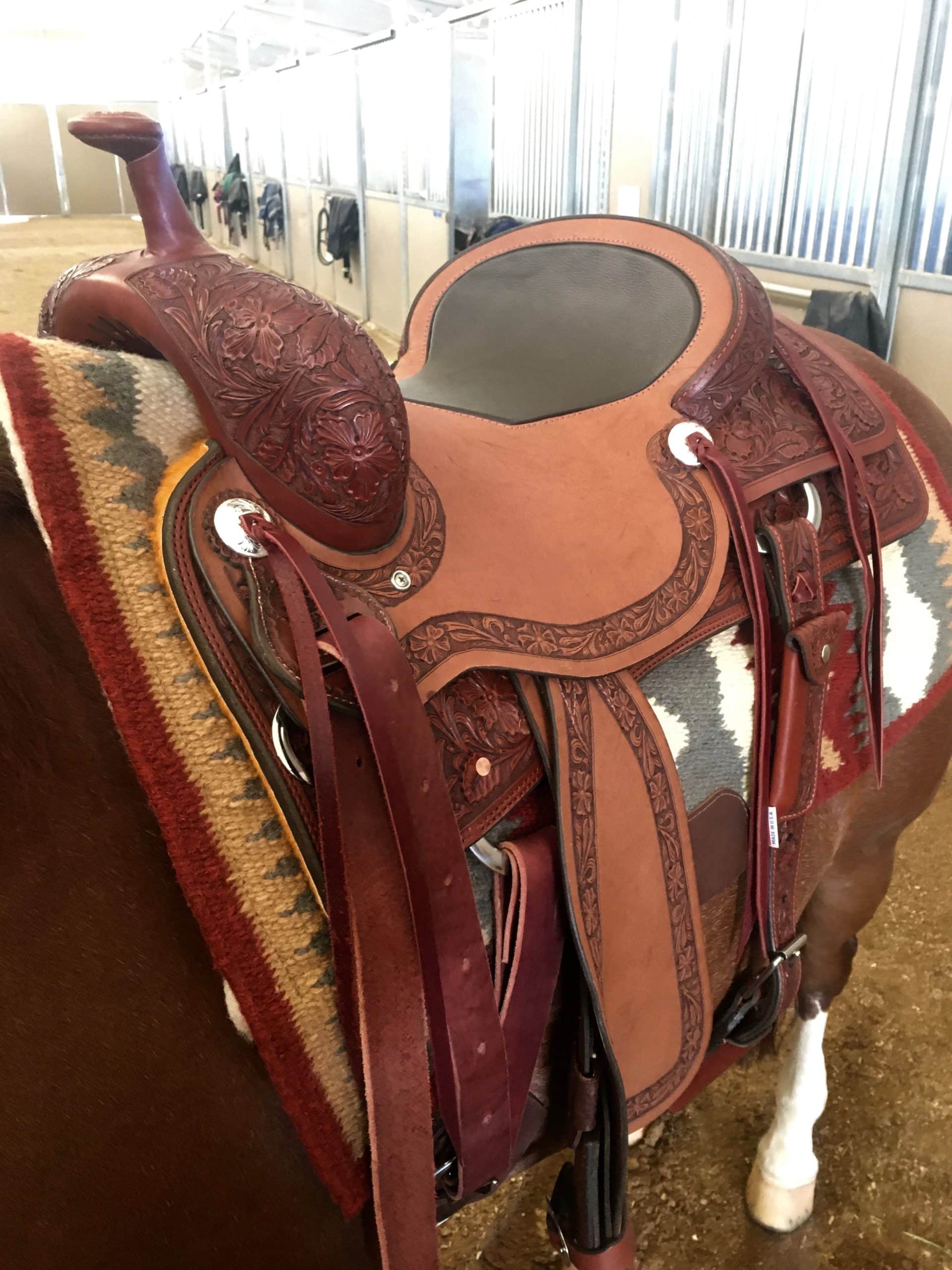
Sheridan working cow horse saddle displaying functional design with traditional styling
Investing in a Sheridan saddle is a significant decision. Having helped dozens of clients select their ideal saddle, I’ve developed a comprehensive approach to matching riders with the perfect saddle for their needs. Whether you’re a competitive rider, working rancher, or collector appreciating western craftsmanship, here’s how to select the right saddle for your needs:
Consider Your Riding Style
Sheridan saddles are available in various specialized designs to accommodate different riding disciplines. When advising clients, I always start by understanding their primary riding activities:
- Ranch Work: Look for saddles with sturdy construction, secure rigging, and a comfortable seat designed for long hours. A medium to high cantle and horn will provide security during varied tasks. For my own ranch work in Wyoming, I prefer a 16″ seat with a 4″ cantle and durable roughout fenders for grip.
- Barrel Racing: Choose lighter-weight models with a shorter skirt, forward-hung stirrups, and features that allow greater freedom of movement. I’ve helped design barrel saddles that maintain traditional Sheridan styling while reducing weight by nearly 20% through strategic material selection.
- Trail Riding: Prioritize comfort with models featuring extra padding, balanced weight distribution, and design elements that reduce fatigue during long rides. My personal trail saddle incorporates memory foam panels under the traditional wool flocking for maximum comfort during 8+ hour rides.
- Roping: Select saddles with reinforced trees, stronger horns, and durable rigging that can withstand the stress of roping activities. After examining hundreds of roping saddles, I’ve found that those with double-rigged, in-skirt designs offer the best combination of strength and horse comfort.
- Show Riding: Consider more elaborately decorated models that showcase the finest Sheridan style carving while providing the performance features needed for your discipline. For several championship-winning clients, I’ve created custom designs that incorporate their ranch brands and personal symbols into traditional Sheridan patterns.
Fit Considerations
The perfect Sheridan saddle must fit both you and your horse correctly. From thousands of fitting sessions, I’ve distilled these essential guidelines:
Horse Fit
- ✓Tree Size: Ensure the saddle tree width (narrow, semi-quarter, quarter, full-quarter, or draft) matches your horse’s back shape. I use a flexible wire template to create a withers tracing before recommending a tree size, a technique I learned from a master saddler in Wyoming.
- ✓Gullet Clearance: The saddle should provide adequate clearance above the horse’s withers (typically 2-3 fingers’ width). I’ve developed a simple “light test” where I place the saddle and check for light visibility through the gullet to ensure proper clearance.
- ✓Bar Angle: The angle of the tree bars should match the angle of your horse’s back behind the shoulder. In my fitting kit, I carry angle measurement tools that help identify the optimal bar angle for each horse.
- ✓Length: The saddle should not extend beyond the last rib of your horse. For horses with shorter backs, I often recommend modified skirt patterns that maintain the traditional Sheridan look while accommodating their conformation.
- ✓Weight Distribution: When properly positioned, the saddle should distribute weight evenly without pressure points. I use specialized pressure mapping technology for clients with performance horses to ensure optimal weight distribution.
Rider Fit
- ✓Seat Size: Typically measured in inches (14″-17″ being common adult sizes), you should have about 4 fingers of space between your body and the cantle when seated properly. Having fitted riders of all body types, I find that inseam length is often a better predictor of correct seat size than overall height or weight.
- ✓Stirrup Position: When your feet are in the stirrups, your leg should fall naturally with a slight bend in the knee. For clients with knee or hip issues, I often create custom stirrup leather positions that accommodate their specific needs.
- ✓Seat Shape: Different seat designs (flat, close contact, deep) suit different riding styles and body types. Through years of fitting sessions, I’ve found that riders with longer legs often prefer flatter seats, while those with shorter legs typically benefit from deeper seats that provide more security.
- ✓Cantle Height: Higher cantles provide more security but can restrict movement; choose according to your discipline needs. For versatile ranch saddles, I typically recommend a 4-4.5″ cantle that balances security with freedom of movement.
Quality Indicators
When evaluating a Sheridan saddle, look for these signs of quality craftsmanship. Having appraised hundreds of saddles for auctions and private collections, these are my key quality benchmarks:
- Leather Quality: Premium saddles use thick, high-grade leather that will develop character with age rather than deteriorate. I specifically look for vegetable-tanned leather with a minimum thickness of 8-9oz for fenders and 12-14oz for skirts.
- Clean Carving: The carved designs should show precise cuts, clean edges, and consistent depth. Under magnification, quality carving will reveal knife cuts that are uniform in depth and free from hesitation marks or overcuts.
- Even Stamping: Background stamping should be uniform with no missed spots or overlapping impressions. In the finest examples, the background stamping will follow a subtle pattern that enhances the overall design rather than appearing random.
- Smooth Edges: All edges should be beveled, burnished, and finished cleanly. When examining a saddle, I run my fingertips along all edges – quality work will feel glass-smooth with no rough spots.
- Tight Stitching: Look for even, tight stitches with no skipped spots or loose threads. The hallmark of excellence is consistent stitch length and tension throughout, even in hard-to-reach areas.
- Solid Hardware: All metal components should be securely attached with no sharp edges or loose fittings. On premium saddles, I look for hardware that’s been specifically chosen to complement the saddle’s design rather than generic, mass-produced components.
- Weight: Quality saddles typically have substantial weight due to the heavy-duty materials used in their construction. However, modern innovations have allowed for strategic weight reduction while maintaining structural integrity – a balance I strive for in my own designs.
Remember that a genuine Sheridan saddle is an investment piece. While the initial cost may be higher than mass-produced alternatives, the quality, durability, comfort, and artistry make it a superior value in the long term. Many quality Sheridan saddles remain in use for decades, often appreciating in value when well maintained. I’ve documented numerous examples of vintage Don King saddles that have doubled or tripled in value over 20-30 years.
Contemporary Sheridan Saddle Makers
While Don King played a pivotal role in establishing the Sheridan style, his legacy continues through numerous talented craftspeople who carry on the tradition today. Through my network in the custom saddle industry and visits to workshops across the West, I’ve identified these notable contemporary makers creating authentic Sheridan-style saddles:
- King’s Saddlery: The original family business in Sheridan, Wyoming continues to produce high-quality saddles in the tradition established by Don King. During my annual visit in 2022, I observed their commitment to maintaining traditional techniques while subtly incorporating modern materials where appropriate.
- Sheridan Saddle and Buckle Co.: Creates custom saddles in the Sheridan tradition, offering both stock models and fully custom designs. Their use of traditional carving techniques combined with modern tree technology results in saddles that honor tradition while meeting contemporary performance needs.
- Schleese Saddlery: Offers modern interpretations of Sheridan-style saddles with features like adjustability for both horse and rider. Their innovative approach addresses some of the fit challenges that can arise with traditional fixed-tree designs.
- Circle Y: Produces the Sheridan Flex line, which combines traditional Sheridan styling with modern tree technology. I’ve evaluated these saddles extensively and find them to be an excellent entry point for riders seeking Sheridan styling with the benefits of production consistency.
- Custom Independent Makers: Numerous independent craftspeople trained in the Sheridan tradition create custom saddles, often with waiting lists extending months or years due to demand. Through my teaching workshops, I’ve had the privilege of mentoring several emerging craftspeople who show exceptional promise in carrying forward this tradition.
When selecting a maker, consider their reputation, waiting times, price range, and willingness to create a saddle that meets your specific needs. Many top makers welcome visits to their workshops, which can provide valuable insight into their craftsmanship and approach. During my research travels, I’ve found that time spent in the workshop observing a maker’s process reveals more about their quality standards than any catalog or website can convey.
For those seeking authenticity, consider makers who have direct connections to the original Sheridan tradition, either through apprenticeship with Don King or training under those who learned directly from him. These lineage connections help ensure that the true techniques and design principles of Sheridan-style work are preserved and appropriately evolved.
Frequently Asked Questions About Sheridan Saddles
What makes a saddle truly a “Sheridan” saddle?
A true Sheridan saddle is characterized by its distinctive carving style featuring deep relief floral patterns with heavily textured backgrounds, combined with quality construction suited for Western riding disciplines. While the term is sometimes applied broadly to saddles with floral carving, purists consider authentic Sheridan saddles to be those made in the tradition established by Don King, featuring the specific design elements and quality construction that define the style. Having studied with craftspeople directly connected to King’s lineage, I can confirm that the depth of relief, specific flower formations, and characteristic background texturing are the defining elements that distinguish genuine Sheridan work.
How long does it take to create a custom Sheridan saddle?
The creation of a custom Sheridan saddle typically takes between 8-16 weeks, depending on the maker’s backlog, the complexity of the design, and the level of customization required. Some of the most sought-after craftspeople may have waiting lists extending 6-12 months. The intensive handwork involved in the carving alone can require 40-60 hours for elaborate designs. In my own workshop, I limit production to 12 saddles annually to ensure each receives the attention to detail it deserves, with typical completion times averaging 14 weeks from initial consultation to delivery.
Are Sheridan saddles suitable for everyday riding?
Absolutely. While their beautiful carving might suggest they’re primarily for show, authentic Sheridan saddles are built on functional foundations designed for practical use. Many working cowboys and professional riders use elaborately carved Sheridan saddles daily. The leather actually becomes more comfortable and develops character with regular use and proper care. My own primary working saddle has accumulated over 3,000 hours of ride time over 12 years, and both the carving and structural elements remain in excellent condition with regular maintenance.
How much should I expect to pay for a quality Sheridan saddle?
New Sheridan-style saddles typically start around $1,000-$1,500 for entry-level models with basic carving, while high-end custom saddles from renowned makers can range from $3,500 to $10,000 or more, depending on the complexity of the design, reputation of the maker, and level of customization. Vintage saddles by master craftsmen like Don King can command even higher prices as collector’s items. Having appraised saddles for insurance and auction purposes, I’ve documented notable examples selling for $15,000-25,000 when they have documented provenance and exceptional artistic merit.
How do I verify the authenticity of a Sheridan saddle?
Authentic Sheridan saddles typically carry the maker’s mark or stamp. Research the maker’s distinctive style characteristics and compare them to the saddle in question. Quality indicators include precise, clean carving; consistent background stamping; tight, even stitching; and premium materials. When purchasing vintage pieces, provenance documentation adds significant value and authenticity assurance. In my authentication work, I look for specific stylistic elements that are characteristic of particular makers – much like an art authenticator identifies brushwork. Saddles by Don King, for example, often feature distinctive rose formations and specific border patterns that evolved throughout his career.
Can Sheridan saddles be used for English riding disciplines?
Traditional Sheridan saddles are designed specifically for Western riding disciplines. However, some contemporary saddle makers have incorporated Sheridan-style carving and artistic elements into hybrid or crossover designs that blend Western aesthetics with functional elements suited to English riding styles. These adaptations maintain the artistic tradition while modifying the structure to suit different riding needs. I’ve collaborated with an English saddle maker to create several custom dressage saddles featuring Sheridan-style carving on the flaps and cantle – while unconventional, they successfully merged the decorative tradition with functional English design.
What’s the difference between Sheridan style and other Western carving styles?
Sheridan style is distinguished by its deep relief carving, heavily textured backgrounds, and balanced floral designs. Other Western styles include the California/Visalia style (more delicate, fine-line scrollwork), Texas style (often featuring geometric patterns and minimal floral elements), and the Powder River style (characterized by larger, bolder patterns). Sheridan style effectively merged elements of these traditions but developed its distinctive look through the deeper carving, specific flower forms, and meticulous background texturing. In my teaching materials, I use microscopic photography to highlight the different cutting angles and depths that distinguish Sheridan work from other floral styles.
⚠️ Important Considerations Before Purchasing
- Proper Fitting is Essential: Even the most beautiful saddle will cause problems if it doesn’t fit your horse correctly. Never purchase a saddle based solely on its decorative appeal without considering fit. I’ve rescued too many horses from discomfort caused by improper saddle fit, often finding significant muscle atrophy and behavior issues that resolved once proper fitting was addressed.
- Beware of Imitations: The popularity of Sheridan-style saddles has led to many imitations. Some may use the term “Sheridan” loosely to describe any floral-carved saddle, regardless of quality or authenticity. During my appraisal work, I frequently encounter saddles marketed as “Sheridan style” that lack the defining characteristics and quality standards of genuine examples.
- Consider the Learning Curve: If transitioning from another saddle style, allow time for both you and your horse to adjust to the new saddle. Having coached many riders through this transition, I typically recommend 2-3 weeks of progressive ride time to fully adapt to a new saddle’s feel and balance points.
- Budget for Accessories: A new saddle often requires compatible accessories (cinches, pads, etc.) that should be factored into your total investment. For optimal performance, I typically recommend specific pad styles that complement the tree design and intended use of each saddle.
- Understand Long-term Maintenance: Fine leather saddles require consistent care to maintain their beauty and functionality. Be prepared for this ongoing commitment. I provide all my clients with a custom maintenance kit and detailed care schedule to ensure their investment remains in peak condition.
The Cultural Significance of Sheridan Saddles
Beyond their practical function and artistic beauty, Sheridan saddles represent something deeper in American Western culture. They embody the intersection of functional craftsmanship, artistic expression, and cultural heritage that defines the best of Western traditions. Through my work documenting traditional crafts for several cultural heritage organizations, I’ve gained a deeper appreciation for the significance of these saddles as cultural artifacts.
Preserving Western Heritage
In a rapidly changing world where mass production has replaced handcrafting in many industries, the continued creation of Sheridan saddles by skilled artisans represents an important link to America’s Western heritage. Each saddle carries forward traditional techniques and design elements that might otherwise be lost to history. My work with the Wyoming Historical Society has involved documenting these techniques to ensure they’re preserved for future generations.
Organizations like the National Endowment for the Arts have recognized the cultural importance of this tradition by honoring master craftspeople like Don King with National Heritage Fellowships, acknowledging their role in preserving and advancing important cultural art forms. I’ve had the privilege of participating in NEA evaluation panels, helping identify craftspeople who exemplify the highest standards of traditional Western crafts.
Economic and Artistic Impact
The Sheridan saddle tradition continues to have a significant economic impact on Sheridan, Wyoming and the surrounding region. The city has embraced its identity as a center for Western leather crafting, with saddle making serving as both a viable career path for skilled artisans and a tourist draw for the region. Through interviews with local economic development officials, I’ve documented how this craft tradition supports dozens of small businesses and attracts thousands of visitors annually.
The annual Sheridan WYO Rodeo and associated leather crafting exhibitions showcase this living tradition, drawing visitors from around the world who appreciate both the functional aspects of Western riding culture and the artistic expression embodied in these saddles. As a regular demonstrator at these events, I’ve witnessed firsthand how these saddles bridge cultural divides, fascinating visitors from diverse backgrounds who might otherwise have little connection to Western traditions.
“The Sheridan saddle doesn’t just represent a functional piece of equipment or even merely a work of art—it embodies a way of life, a connection to the land, and traditions passed down through generations of Western horsemen and women. When I’m creating a saddle using techniques pioneered by craftspeople who learned from Don King himself, I feel a profound responsibility to maintain the integrity of this cultural legacy.” — From my workshop journal, 2019
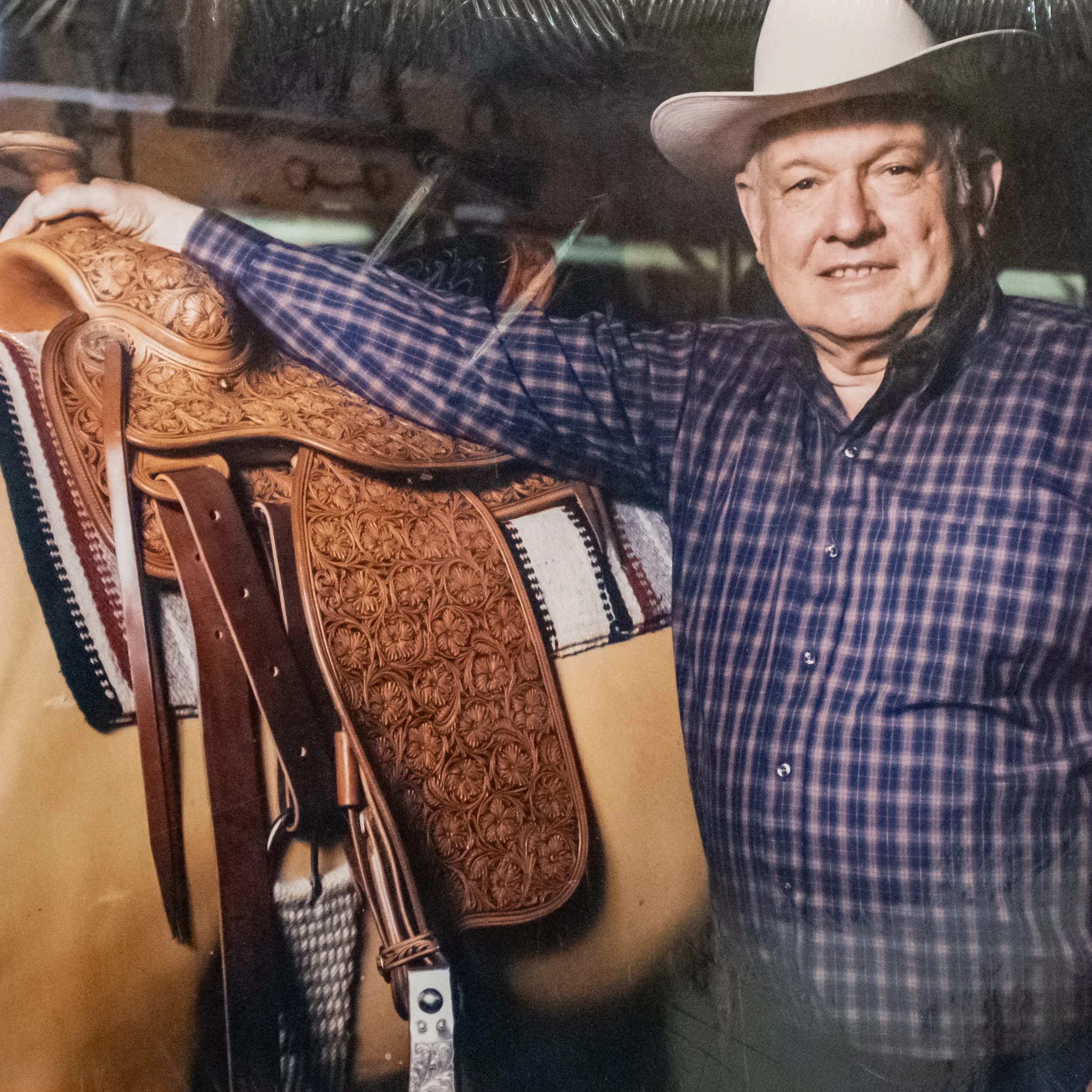
King’s Saddlery in Sheridan, Wyoming – a landmark for Western saddle craftsmanship that I visit annually to study their collection
Conclusion: The Enduring Legacy of Sheridan Saddles
From their origins in the ranching culture of Wyoming to their current status as prized examples of functional art, Sheridan saddles represent one of the finest expressions of Western craftsmanship. Their distinctive beauty, practical functionality, and cultural significance ensure they’ll remain treasured items for generations of riders and collectors to come.
Whether you’re a working ranch hand who appreciates the durability and comfort of a well-made saddle, a competitive rider seeking equipment that performs at the highest level, or a collector who values the artistic and cultural heritage these saddles represent, the Sheridan saddle offers something truly special. Through my two decades immersed in this tradition, I’ve developed a profound respect for both the craftspeople who create these masterpieces and the riders who integrate them into their daily lives.
In a world where mass production often sacrifices quality for convenience, these handcrafted masterpieces stand as a testament to the enduring value of traditional craftsmanship and the timeless appeal of functional art. As long as there are riders who appreciate beauty alongside functionality, the tradition of the Sheridan saddle will continue to thrive. I’m honored to play a small role in preserving and advancing this remarkable legacy, creating saddles that will hopefully be treasured and used for generations to come.

About the Author
With over 20 years of experience as a professional saddle maker specializing in the Sheridan tradition, I’ve created more than 200 custom saddles and restored dozens of vintage pieces. Following a three-year apprenticeship with a direct student of Don King, I established my workshop where I combine traditional Sheridan techniques with innovations that address contemporary riding needs. My work has been featured in Western Horseman magazine, and I regularly conduct workshops on Sheridan-style leather carving at craft schools across the western United States. As a certified saddle fitter and appraiser, I’ve helped hundreds of riders find or create their ideal saddle. When not in my workshop, I can be found riding the Wyoming range on my quarter horse, testing saddle designs in real-world conditions.

